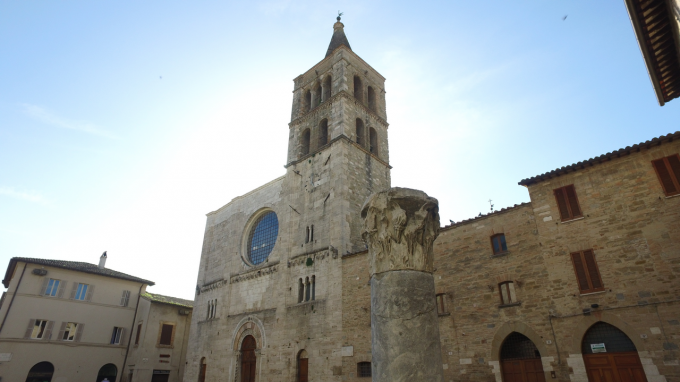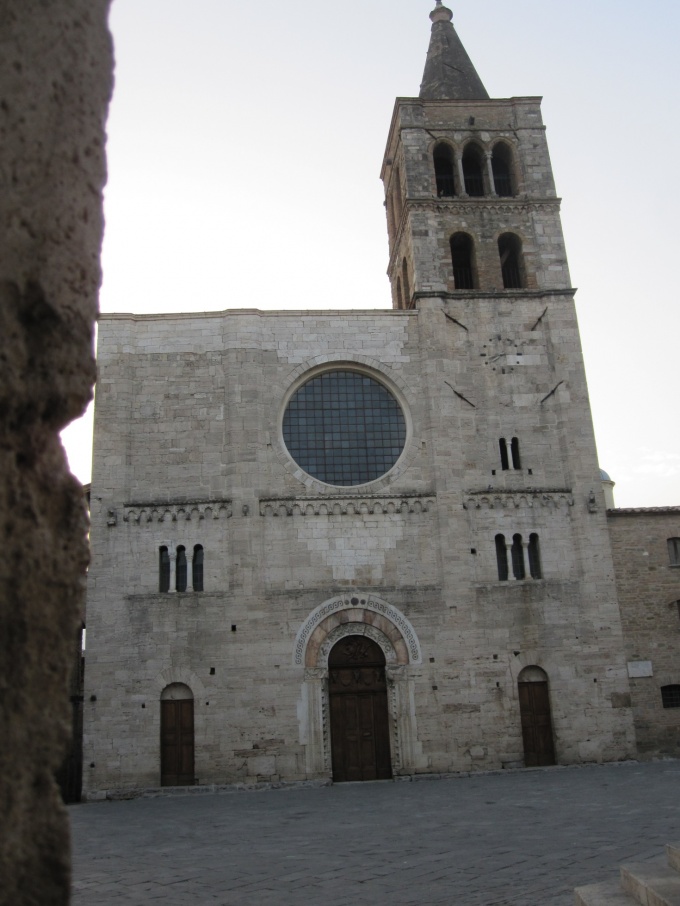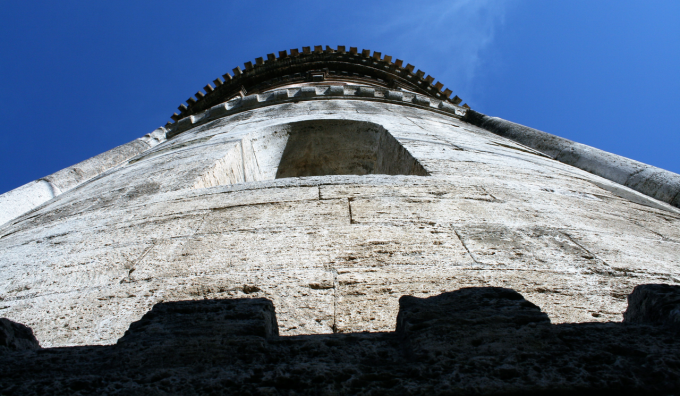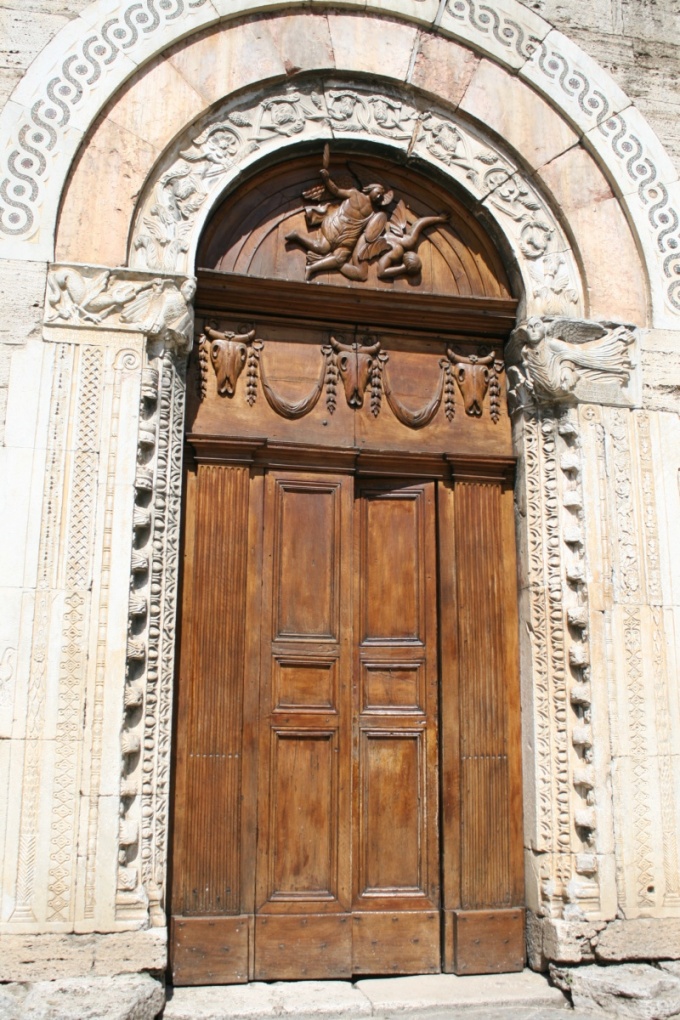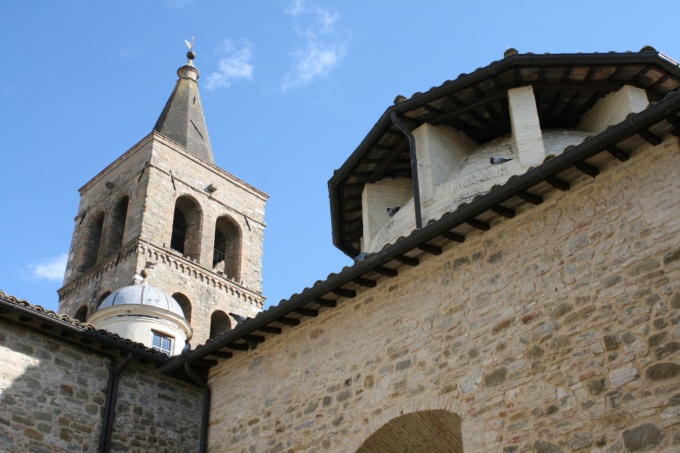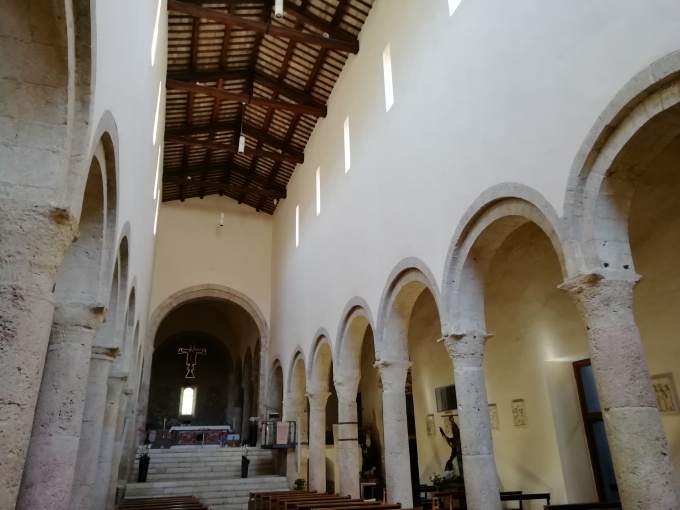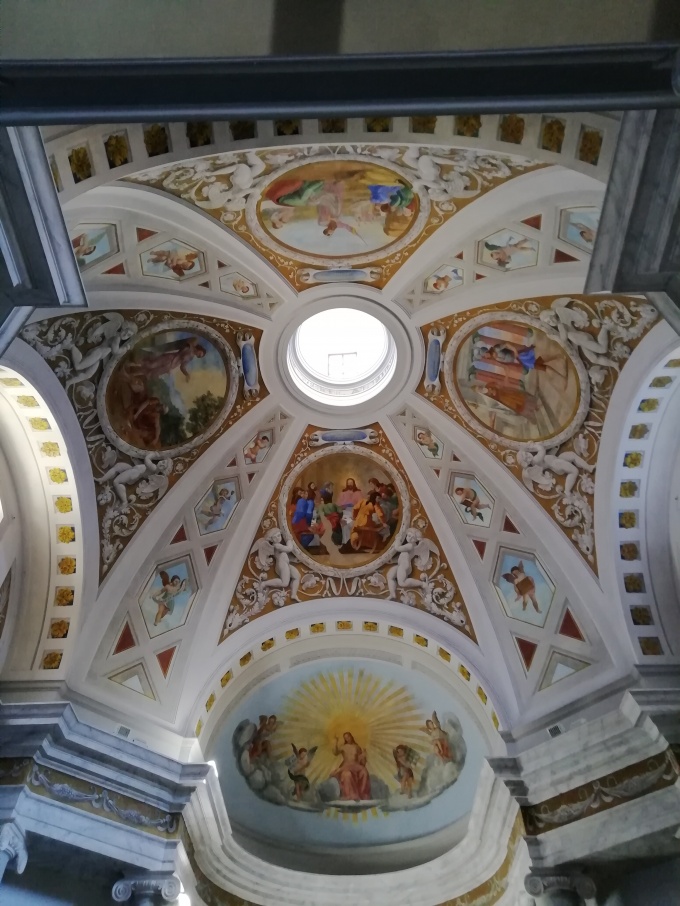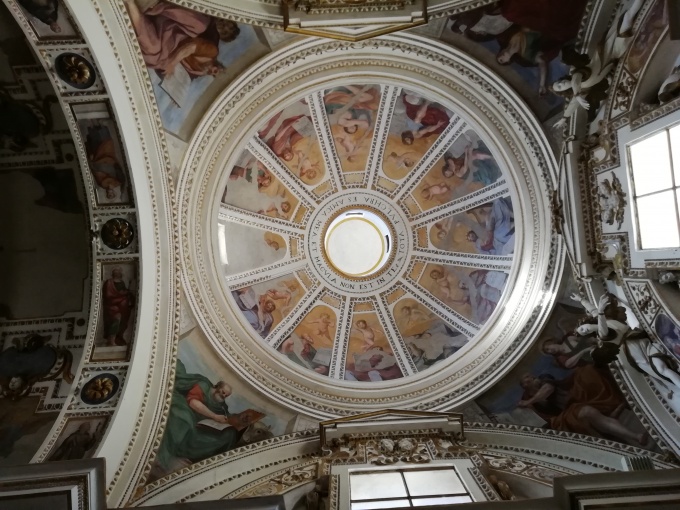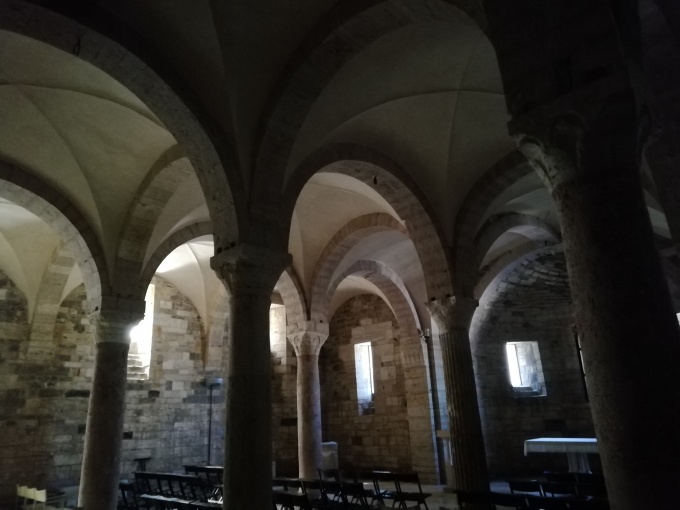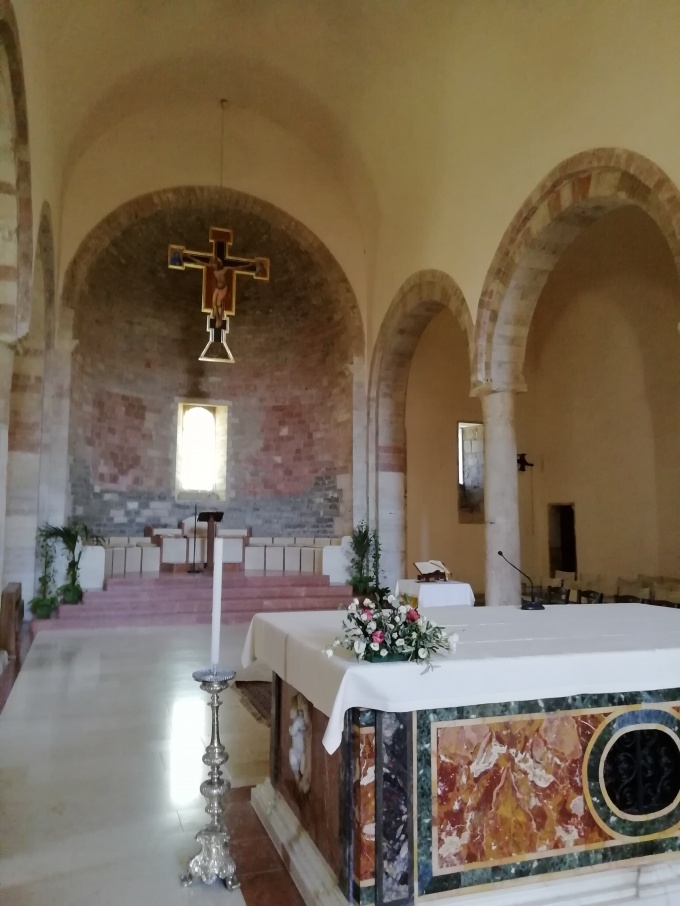Built by Binello and Rodolfo between the 12th and 13th centuries, it has undergone numerous renovations over the course of time; the restoration of 1951-1957 removed the eighteenth-century decorations.
The church has a travertine façade with a horizontal crowning, divided at the top by pilasters and a frame with protomes. The beautiful portal is adorned with a frieze that develops in three orders along the arch and uses, in the jambs, Roman frames reworked. On the right of the façade, the bell tower rises and after modified in the fifteenth century.
The interior, with three naves, has a raised presbytery and a high crypt, divided into four aisles by columns, some of which are salvaged.
In the right aisle, there is the seventeenth-century baptismal font, followed by the chapel of the S.S. Sacramento, renewed in the nineteenth century by Vitali and decorated by Traversari. Next to it, there is the chapel of the Madonna Del Carmine with frescoes by Andrea Camassei, dating back to about 1625. The processional statue of Saint Vincent is at the right of the entrance, which was made at public expense in 1638.
In the left aisle there was a beautiful fifteenth-century crucifix with wooden silhouettes depicting the Madonna, the Magdalene and St. John, attributed to the Providoni now preserved in the Civic Museum.
In a room adjacent to the presbytery there is the silver statue of St. Vincent, patron saint of Bevagna, executed by Peter Ramoser. In the back of the chair, completed in 1785, there is depicted the martyrdom of the Saint with the view of Bevagna in the background.


